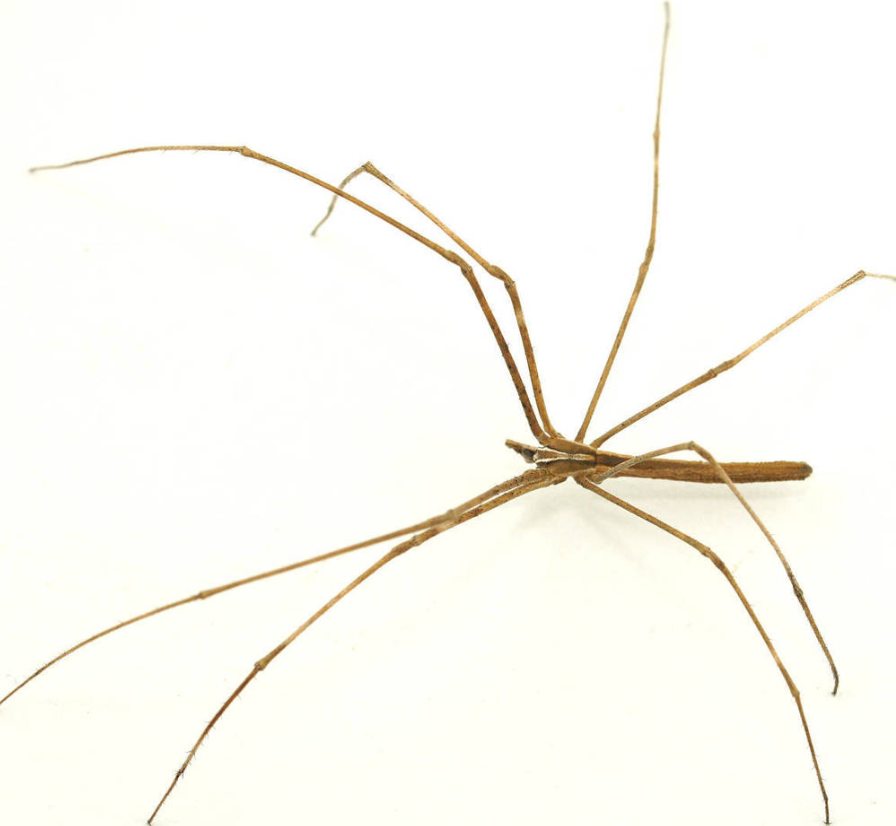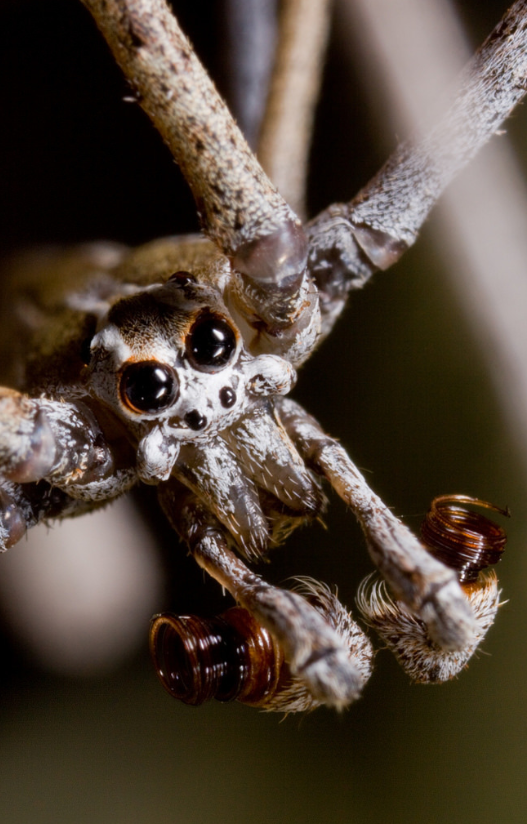Deinopidae, commonly referred to as net-casting spiders, constitute a family of cribellate arachnids first delineated by Carl Ludwig Koch in 1850. These spiders exhibit elongated, stick-like morphologies and employ a distinctive predation strategy: they fabricate a small, rectangular web, which they suspend between their anterior legs and deploy over unsuspecting prey. This specialized web can extend to two or three times its relaxed dimensions, effectively ensnaring any organism that makes contact.

A hallmark of Deinopidae is their exceptional nocturnal vision, facilitated by their enlarged posterior median eyes. These eyes, surpassing the size of their other ocular counterparts, are adept at capturing minimal light, enabling precise net deployment in dim environments. The prominence of these eyes often imparts an illusion of the spiders possessing merely two eyes. The genus Deinopis, colloquially termed ogre-faced spiders due to their perceived resemblance to mythological ogres, is the most renowned within this family. Another notable genus is Menneus, commonly known as humped-back spiders.
Deinopidae are predominantly distributed across tropical regions worldwide, encompassing Australia, Africa, and the Americas. In Florida, species of Deinopis are frequently observed suspended upside down beneath palmetto fronds during daylight hours. As night falls, they emerge to execute their unique predation technique on various invertebrates. Remarkably, their eyes can gather ambient light more efficiently than those of felines and owls, despite lacking a reflective layer known as the tapetum lucidum. Instead, each night, they synthesize a substantial area of light-sensitive membrane within their eyes, which is subsequently degraded at dawn, a process necessitated by the absence of irises in arachnid eyes.

Net-casting spiders employ an unparalleled method of capturing prey. They construct a diminutive web resembling a net, held taut by their front legs, which can be rapidly expanded to envelop unsuspecting insects.
Identification
These spiders possess exceptional vision, characterized by a prominent pair of forward-facing eyes that enhance nocturnal hunting capabilities. The genus Deinopis is commonly encountered in gardens, while Menneus species exhibit less conspicuous eyes.
Net-casting spiders exhibit elongated, stick-like bodies with slender legs. Members of the genus Deinopis feature a large, conspicuous pair of anterior eyes, justifying their moniker “ogre-faced spiders,” and display coloration ranging from fawn to pinkish brown or chocolate brown. Conversely, Menneus species possess smaller eyes and exhibit subtle greenish-brown to grey patterning. Males are typically smaller, more slender, and may differ in coloration and patterning compared to females.
Habitat
These spiders are often observed on warm summer nights amidst garden shrubs and trees.
Distribution
Net-casting spiders are extensively distributed within forest habitats of southeastern Australia.
Feeding and Diet
Primarily nocturnal, they prey upon ants, beetles, crickets, and other spiders.
Behavior and Adaptations
At rest, the spider suspends itself from vegetation with its head oriented downward, aligning its elongated body and limbs to mimic a stick-like appearance. In a hunting posture, it maintains this orientation while holding its net with the front four legs, anchoring itself with the hind legs and spinnerets to surrounding foliage. The net, composed of bluish-white, wool-like cribellate silk, is engineered to stretch and entangle prey. To enhance targeting accuracy, the spider often deposits white fecal spots on the substrate beneath its position. When an insect traverses this “target,” the spider swiftly descends its net to ensnare the prey. Upon a successful capture, the spider envelops the prey in silk, administers a paralyzing bite, and proceeds to feed. Occasionally, unused nets are stored on nearby foliage for subsequent use or consumed by the spider.
Life History Cycle
Following copulation, the female net-casting spider constructs robust, spherical egg sacs adorned with brown flecks. Each sac is suspended among low-lying foliage, both dead and living, by a short silk stalk and is further camouflaged with leaf debris.
Net-casting spiders reach maturity during the summer months, coinciding with mating and oviposition activities.
